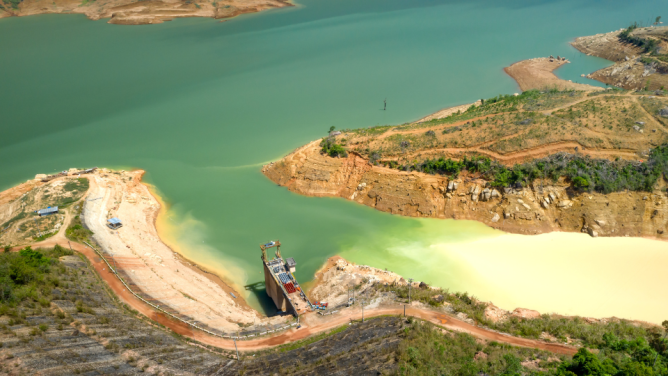
In France, on average more than 65,000 hectares of land was lost to land take each year between 2006 and 2015. That’s the equivalent of an area the size of the Loir-et-Cher department. Land take’s growth comes in many guises, from “constructed” land (housing, offices, etc.), “resurfaced and stabilized” land (roads, railroad tracks, car parks, etc.) and many others (building sites, vacant lots, artificial green spaces). Since the 1980s, land take has increased faster than the population growth. And according to the French General Committee on sustainable development, it causes a “loss of natural and agricultural resources” and puts “heavy pressure on biodiversity”.
In France, can enlisting property developers reduce the impact of land take?
To help rectify the situation, analysis is becoming more precise and the number of solutions are increasing, such as taking a stock take on the amount of housing available and managing it better. In 2018, the French government included a “zero net land take” goal in its biodiversity plan – admittedly, without legal effect, as certain researchers noted. “As it’s not conceivable to imagine a complete stop on issuing construction permits, even in the long term, here ‘net’ means that new surfaces will be inevitably offset by ecological restoration, restoring the land degraded by human intervention,” as Iddri pointed out. The think tank also explained that, seen as though we can’t just stop building, this is more a question of creating compensation mechanisms.
However, such mechanisms are complicated to put in place: there’s not enough free land for create “natural” projects, and there’s the high cost of developing former land take sites, etc. For the think tank, the solution is inevitably a question of “reducing the amount of wasted space to a maximum”, and thus establishing a dialogue with real estate actors. “By considering slowing down the rate in which business and retail parks are expanding and growing – which is today much stronger than economic growth, this could be a common interest for financial stakeholders as well as biodiversity actors,” adds researchers.
British “biodiversity net gain” user manual
The UK is one of the most densely populated and most land-used states in Europe, and it’s perhaps now on the right track. The British government has recently announced its intention to make the Biodiversity Net Gain measure obligatory. This mandate requires new construction projects to assess and take into consideration their impact on the natural habitat. In concrete terms, developers must show that their projects “improve” biodiversity, based on an evaluation system relying on “biodiversity units”, a metric proposed and recently updated by the government.
The British government indicates that on-site measures (creating green corridors, planting more trees, or forming local nature spaces) must be the new norm, even if developers are otherwise charged a levy to finance habitat creation or improvement projects elsewhere. So it seems the UK is stamping out the decrease in biodiversity…Three of Britain’s biggest developers, Barrat Homes, Redrow and Berkeley Group, haven’t waited for the legislation to be implemented, and have launched their own pilot projects that measure the impact of their builds on biodiversity. For example, champions of “nature inclusive building”, Berkeley have their own “calculator” and Redrow has expressed that it wouldn’t be “overly difficult” to achieve. In France, startup Urbalia is calling the shots with its predictive calculating tool to calculate a project’s impact on biodiversity.
However, one worry remains: will the compensation mechanisms take precedence over on-site measures, in short contributing making the cost of pro-biodiversity measures be absorbed in the price of land? All it needs now is agreeing on the metric and the objectives to maintain… Some local projects, such as those in the county of Warwickshire, have shown that apart from their rather basic evaluation tools, success relies above all on the ability to plan ahead. In the heart of the West Midlands, the standard implemented thus makes it easier to evaluate “losses in terms of biodiversity for this or that development, and on the other hand, to calculate what must be done to reach a net gain and to know where it can effectively be implemented.” So will biodiversity be a new set piece in future construction projects?


